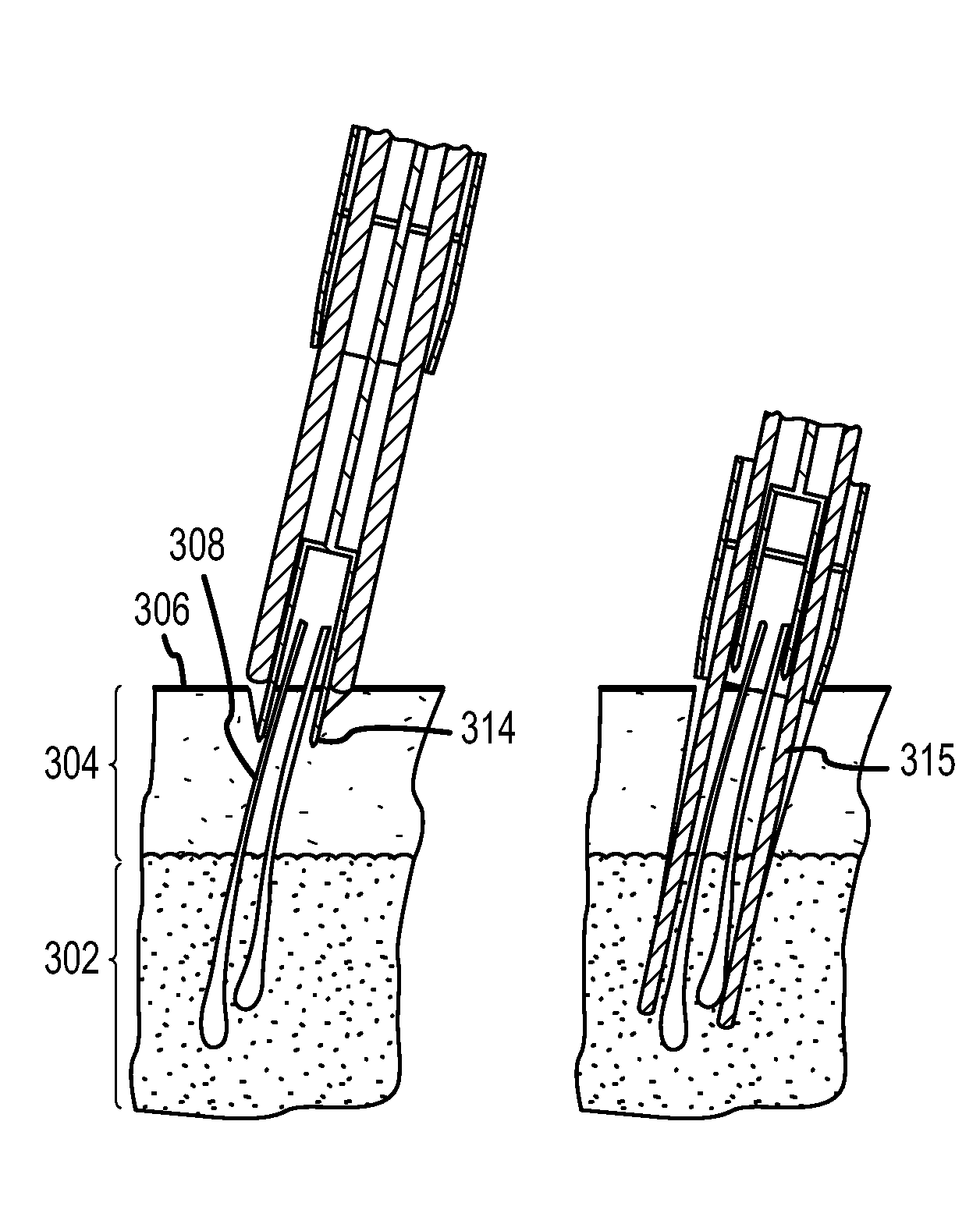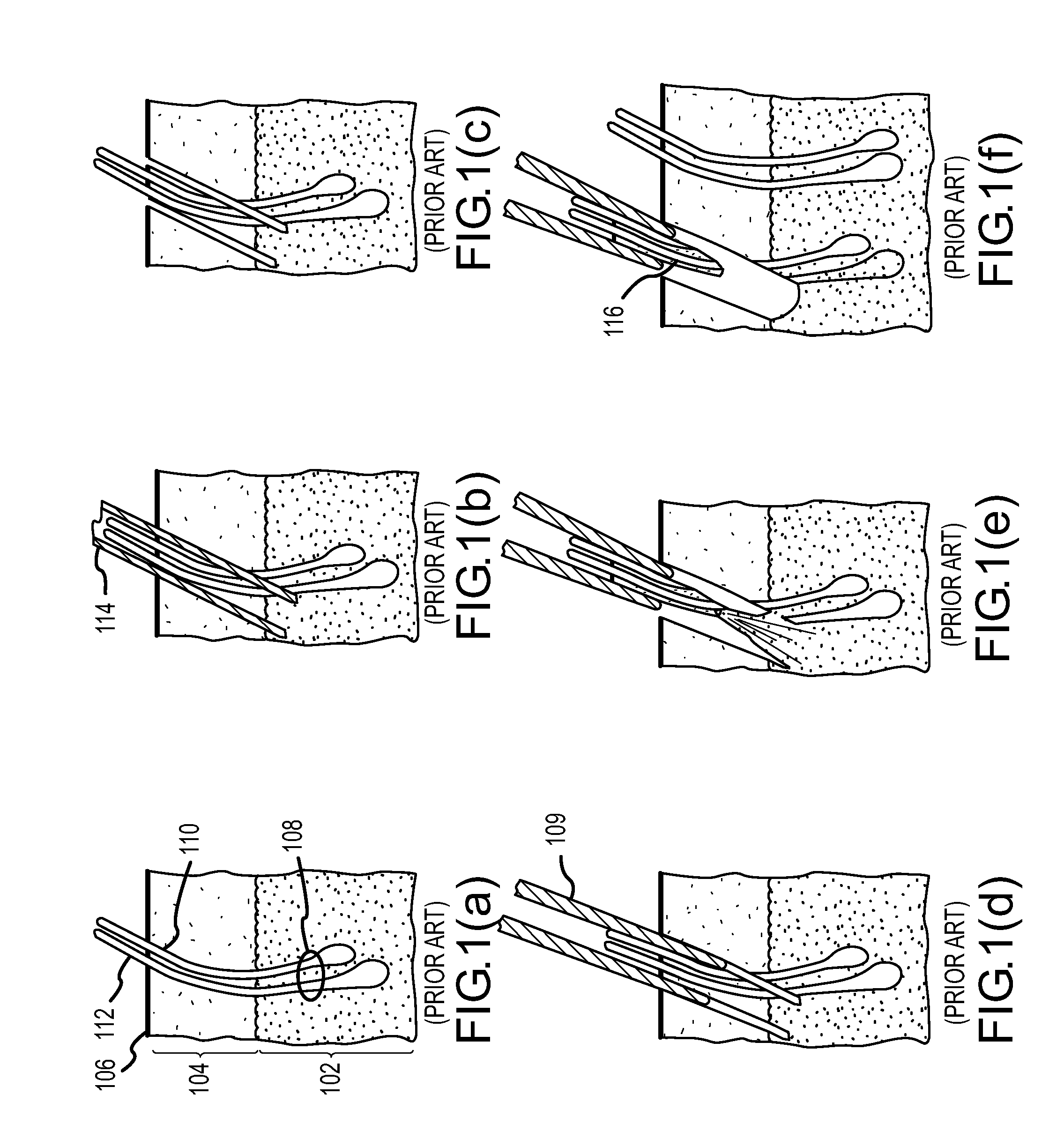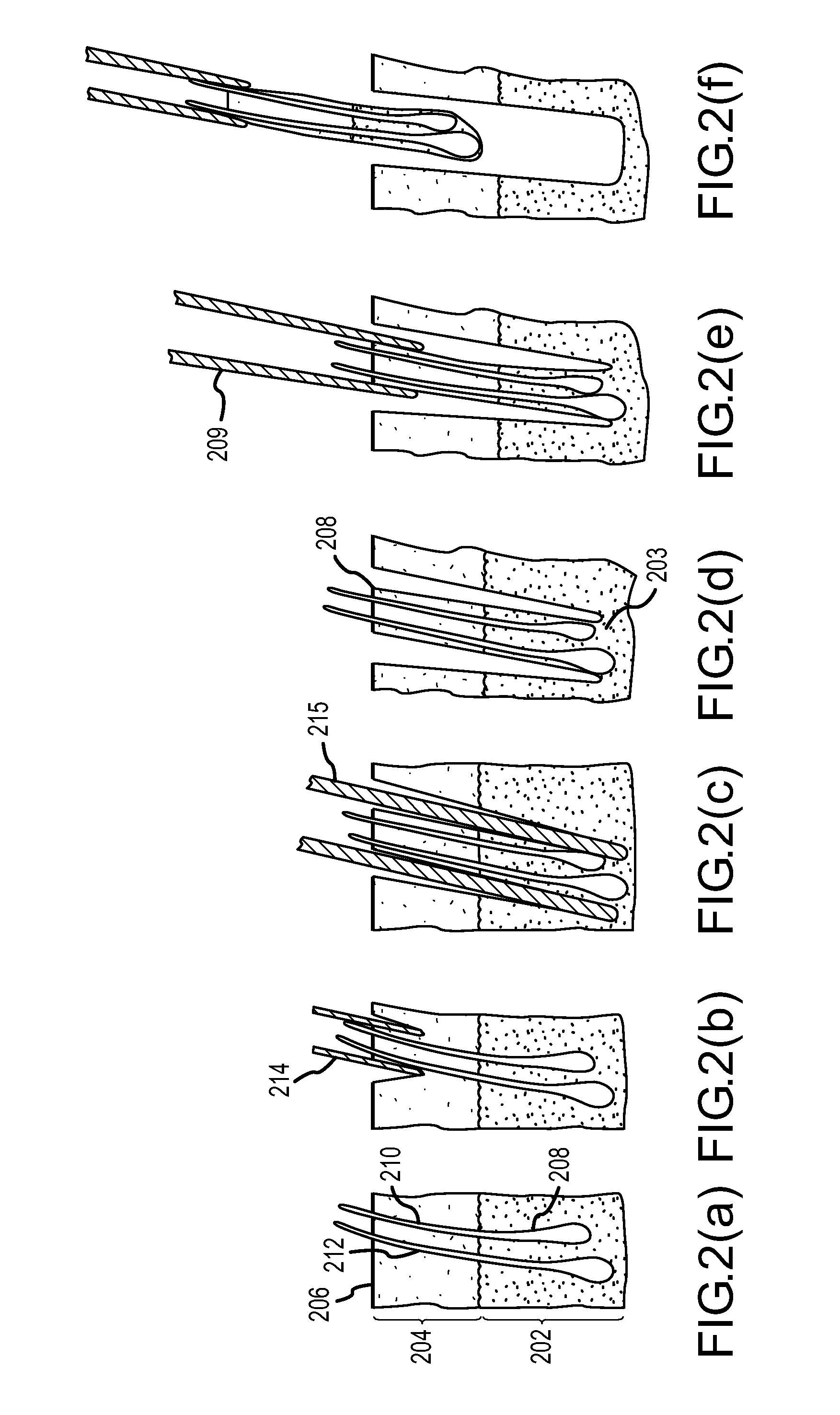Follicular extraction method and device
a technology of follicular hair and extraction method, which is applied in the field of extraction of follicular hair units, can solve the problems of affecting the growth of follicles, so as to reduce or even eliminate the shortcomings of existing technology
- Summary
- Abstract
- Description
- Claims
- Application Information
AI Technical Summary
Benefits of technology
Problems solved by technology
Method used
Image
Examples
examples
[0070]The method of the present invention is carried out to perform follicular extraction on a number of patients. Testing includes patients with demanding hair types, African Americans and those with gray hair, and the results are substantially zero transaction on a limited number of samples. Extrapolation of timing trials using the method of the present invention reveals the ability to extract 300 to 400 grafts per hour. This rate of graft production may convey the ability to transplant up to 2000 grafts per day. A device combining multiple components has the potential to double this graft production rate and allow cases of up to 3000 grafts per day.
[0071]The serrated dissecting punch according to the present invention can reduce the frequency of buried follicular units, a phenomenon where the dissecting punch pushes the follicular unit into the skin tissue. In another example, three patients are enrolled in a follicular extraction procedure, receiving a total of 422 grafts. The m...
PUM
 Login to View More
Login to View More Abstract
Description
Claims
Application Information
 Login to View More
Login to View More - R&D
- Intellectual Property
- Life Sciences
- Materials
- Tech Scout
- Unparalleled Data Quality
- Higher Quality Content
- 60% Fewer Hallucinations
Browse by: Latest US Patents, China's latest patents, Technical Efficacy Thesaurus, Application Domain, Technology Topic, Popular Technical Reports.
© 2025 PatSnap. All rights reserved.Legal|Privacy policy|Modern Slavery Act Transparency Statement|Sitemap|About US| Contact US: help@patsnap.com



